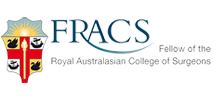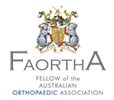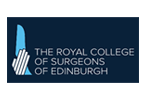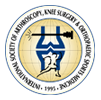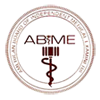
What is subacromial bursitis?
Subacromial bursitis is characterised by pain in the shoulder when lifting the arm sideways or forwards, often between an arc of 60 to 120 degrees. Bursitis describes where a 'bursa' - a small fluid-filled sac that acts as a form of 'cushion' between soft tissue and bone - becomes inflamed. 'Subacromial' describes the location of the affected bursa - over the rotator cuff tendon in the upper arm and under the 'acromion', a section of the shoulder blade (scapula) located on the top of the shoulder.
Shoulder pain can also result from tendonitis where the rotator cuff tendons become damaged or irritated or 'shoulder impingement', where the acromion rubs against (ie impinges on) the subacromial bursa.
Any activity that involves the arm being raised above the shoulder, for example tennis (especially serving), cricket, baseball or freestyle swimming, or any repetitive activity involving lifting things above shoulder or head height can lead to subacromial bursitis.
The condition can also be caused by trauma, such as a fall landing on either the shoulder, the elbow or an outstretched hand, or the cause may be traced to a bone spur ('osteophyte') developing on one of the bones in the shoulder.
What are the treatment options?
The good news is that most cases of subacromial bursitis can be treated without the need for surgical intervention. In fact surgery is only indicated if exhaustive non-operative treatment fails to provide relief.
The first level of treatment for the condition is short term rest and physiotherapy along with a 2-3 week course of anti-inflammatory medication (if not contraindicated). Physiotherapy can involve one or more of the following...
- Specific exercises, such as shoulder blade squeezes, where the shoulder blades are slowly squeezed together and held in position for 5-10 seconds; and pendular exercises and circles, where the affected arm is swung gently or moved in circles from a leant-over position.
- Soft tissue interventions.
- Heat and / or ice treatment.
Home exercises of low intensity and high frequency - combining eccentric training with stabilisation training of the scapula and focusing on relaxation and proper posture is the key. Treatment of myofascial trigger points (including stretching of the muscles) can support exercise therapy.
If symptoms persist longer than 6 weeks, take steps in the workplace to prevent development of a chronic syndrome.
Where physiotherapy on its own is not adequately treating the symptoms there are further non-surgical approaches, including:
- Electrotherapy, such as ultrasound and TENS treatment
- Corticosteroid injection administered under ultrasound guidance can be effective, especially in the first 8 weeks.
What is the role of surgery?
Failure of all of the above non-operative treatments to provide relief may be an indication for surgery. When bursectomy is considered, arthroscopic or mini-open bursectomy is associated with shorter hospital stay and earlier return to work. Biceps tendon pathology and/or acromio-clavicular joint (joint between collar bone and shoulder blade) arthritis is treated at the same time as bursectomy.
Sometimes rotator cuff tears co-exist with bursitis or the tear is in fact the primary pathology. When surgical repair of symptomatic rotator cuff tears is indicated, the condition of the muscles as well as age and activity level of the patient play a role in the decision.
Please remember some of the “don’ts” in the treatment of subacromial bursitis:
- Strict immobilisation.
- Absence of active intervention to prevent overload in work or sports and to address psychosocial factors.
- Surgical treatment without exhausting all non-operative options.
